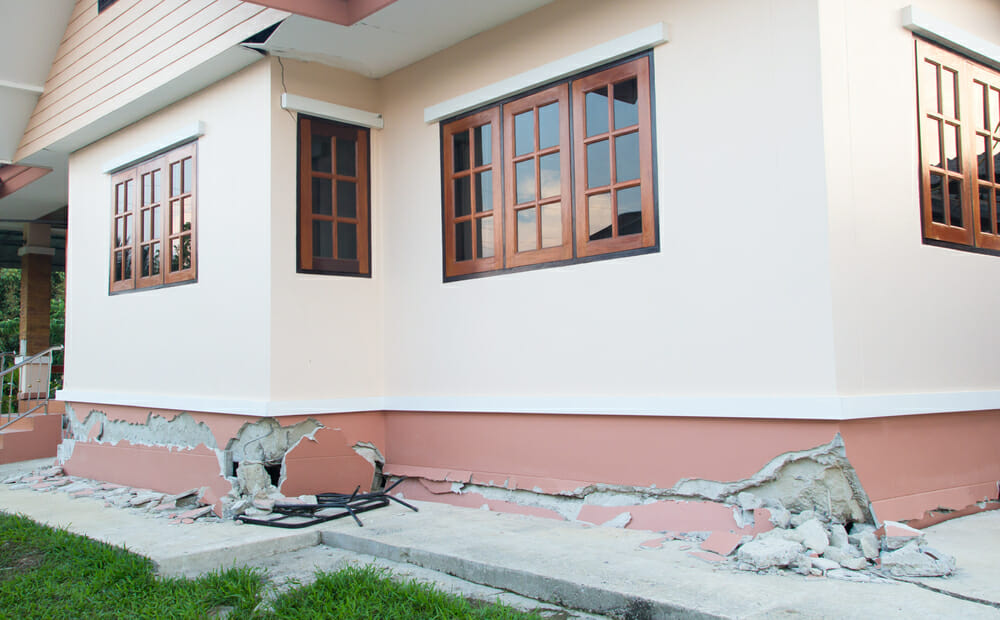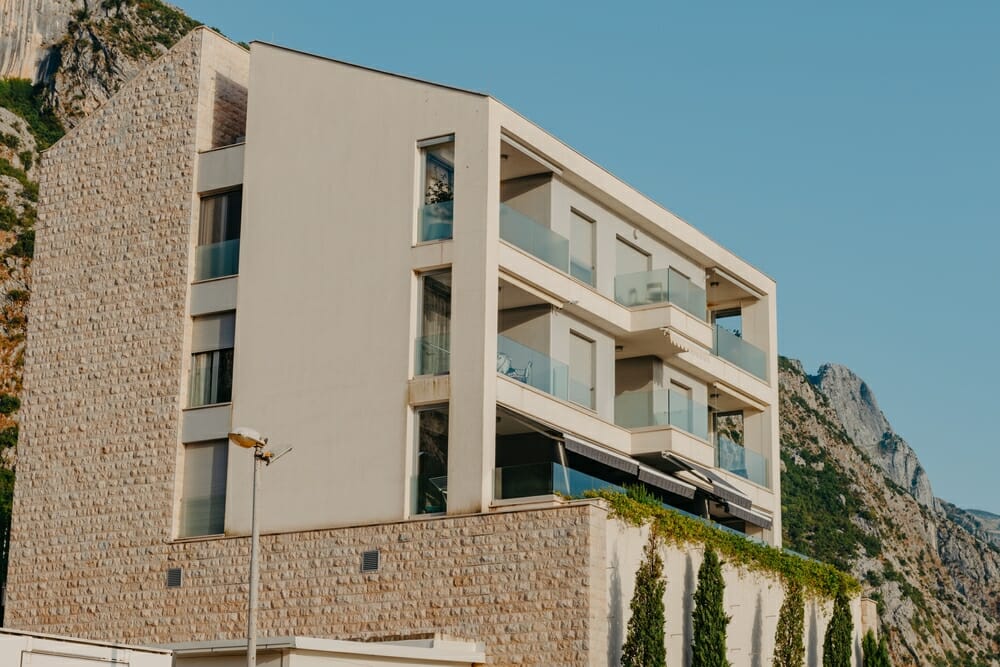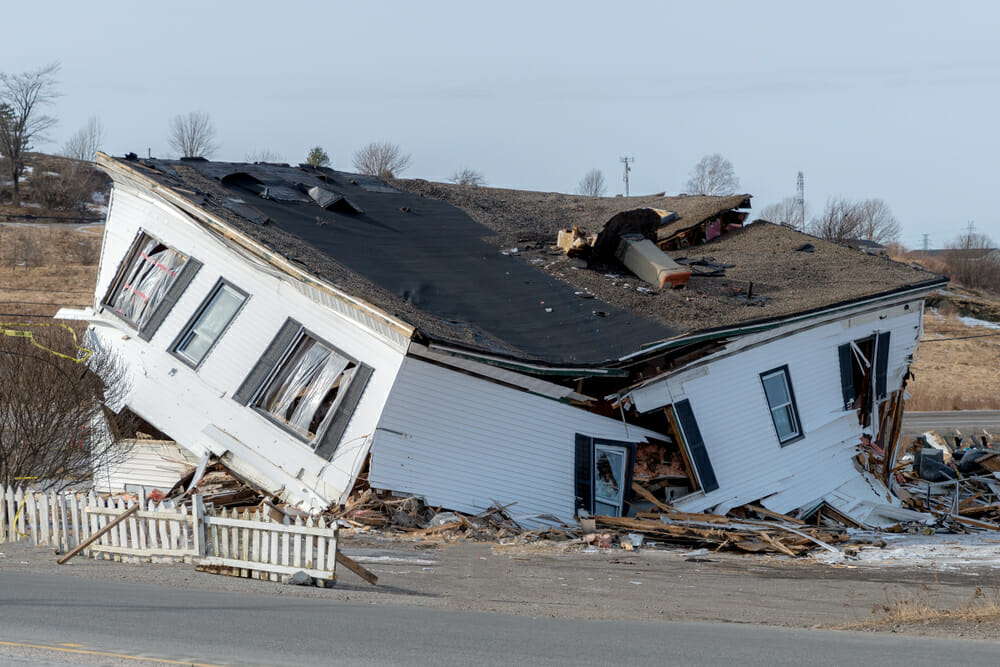Earthquakes strike suddenly and without warning, leaving devastating damage in their wake. To protect your commercial building or place of work from the devastating effects of an earthquake, you should consider retrofitting, especially if you live in the Seattle area. Earthquake retrofitting is a cost-effective and relatively simple process that makes your building more structurally sound and reduces the risk of property damage and injury in the event of an earthquake. Learn why you should retrofit your commercial building with Rife Masonry’s complete guide to earthquake retrofitting.

What Is Earthquake Retrofitting?
Earthquakes cause buildings to forcibly sway and shake, disrupting their structural stability and causing them to collapse or crumble. During earthquakes, buildings typically fail in three ways: wood frame slides off the foundation, cripple wall shifts, or floor joists shift out underneath the mudsill or crippled wall. To avoid these disastrous scenarios, homeowners can retrofit their homes, making them more earthquake-resistant.
Retrofitting involves securing unreinforced masonry (URM) buildings to make them more structurally sound. The process involves adding or reinforcing existing elements of the structure, such as foundations, walls, roofs, and floors, to better withstand the seismic forces of an earthquake.
Earthquake retrofitting can prevent significant damage and potentially save lives during a quake. This process not only increases the safety of your commercial building but may also add value to it. Many homeowners and property owners here in the Seattle area retrofit their buildings to withstand a significant earthquake without sustaining catastrophic damage.
Types of Buildings That Need Earthquake Retrofitting
While many types of buildings can benefit from earthquake retrofitting, certain types are more susceptible to damage during seismic activity. If you own one of these types of commercial properties, you should strongly consider an earthquake retrofit to reinforce the safety and stability of your building.
TYPE 1
Properties with a Raised Foundation
Properties with a raised foundation may have an improperly reinforced crawlspace underneath. During an earthquake, the crawlspace may shift or collapse, causing significant damage to the building. Earthquake retrofitting can reinforce the foundation and prevent this from happening.
TYPE 3
Buildings on Hillsides
Commercial buildings that are built on hillsides may be more susceptible to damage during an earthquake because of the soil conditions. During an earthquake, the ground may shift or slide, causing significant damage to the structure. Earthquake retrofitting techniques like bolting and bracing help secure the structure and prevent it from collapsing or sliding off the hill.
TYPE 2
Buildings With Space Over the Garage
During an earthquake, buildings with spaces built over garages may be at risk if the garage walls are not properly reinforced. Additionally, the weight of the garage and its contents can add to the stress on the structure. Retrofitting helps reinforce the garage walls, as well as the area above the garage, providing extra protection to your commercial building.
TYPE 4
Older Brick Buildings
If you own a brick building built before 1980, we strongly recommend earthquake retrofitting as soon as possible. The reason is that you are at increased risk for structural damage due to the nature of your building material, unreinforced masonry design, and the building’s age.
Benefits of Earthquake Retrofitting
Whether you are a homeowner or property owner, the advantages of earthquake retrofitting are undeniable. Some key benefits of earthquake retrofitting in Seattle include:
Enhanced Safety
The most important benefit of earthquake retrofitting is undoubtedly increased safety. When you reinforce your building’s foundation, walls, roof, and other structural components, you reduce the risk of damage and collapse during an earthquake.
Increased Property Value
A retrofitted building is more valuable than a non-retrofitted one because it provides greater protection against natural disasters and makes patrons and buyers feel more secure. If you plan on selling your business or commercial property in the future, retrofitting is often a wise investment to increase its resale value.
Saves Money in the Long Run
Retrofitting your building saves you money in the long run by reducing the need for costly repairs and reconstruction after an earthquake. Investing in earthquake retrofitting now can prevent costly repairs later on.
Peace of Mind
Perhaps one of the less tangible, but most valuable benefits of retrofitting is the peace of mind it provides. Knowing your commercial property is prepared for a potential earthquake helps reduce stress and anxiety, giving you and your employees or tenants a greater sense of security and comfort.

Types of Earthquake Retrofitting Techniques
Earthquake retrofitting is an essential process for protecting your commercial property from potential earthquake damage. Some of the most common earthquake retrofitting techniques include:
-
Foundation bolting
This technique involves attaching your building to its foundation using bolts or anchor plates. Foundation bolting can help prevent your commercial building from sliding off its foundation during an earthquake.
-
Shear wall construction
Shear wall construction involves adding a plywood wall to the inside of your building’s frame. The plywood is meant to absorb the force of an earthquake and evenly distribute it throughout the space.
-
Cripple wall bracing
Cripple walls are the short walls between the foundation and the floor of a building. These walls can be strengthened by adding plywood panels or braces. -
Roof-to-wall connections
During an earthquake, your roof could slide off the top of the building, crashing into your neighbor’s property or harming a passerby. Roof-to-wall connections involve adding metal connectors between your roof and the walls to keep it secure. -
Reinforced masonry
Reinforced masonry involves strengthening masonry walls by adding additional reinforcement, such as steel bars or mesh, to the mortar joints.
A professional earthquake retrofit contractor like Rife Masonry can help you determine which techniques are most appropriate for your unique building specifications.
Seattle Earthquake Retrofit Contractor
When it comes to earthquake retrofitting, you need a contractor who knows the ins and outs of seismic upgrades. Rife Masonry is a trusted Seattle earthquake retrofit contractor with years of experience in the industry. Our team of professionals will help assess your commercial building’s needs and recommend the right seismic retrofit techniques for the safety of your property. Whether you need foundation bolting, cripple wall bracing, or any other earthquake retrofitting solution, Rife Masonry has the expertise and skills to get the job done right.
Schedule Your Earthquake Retrofit Service Today!
Don’t take chances with safety – contact Rife Masonry today to schedule a consultation and start the process of earthquake retrofitting your commercial building.


